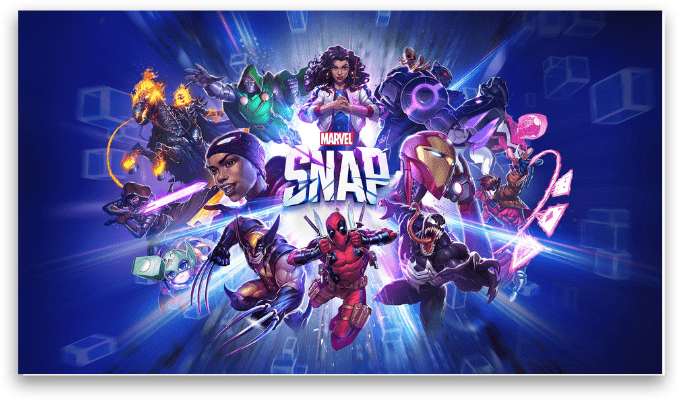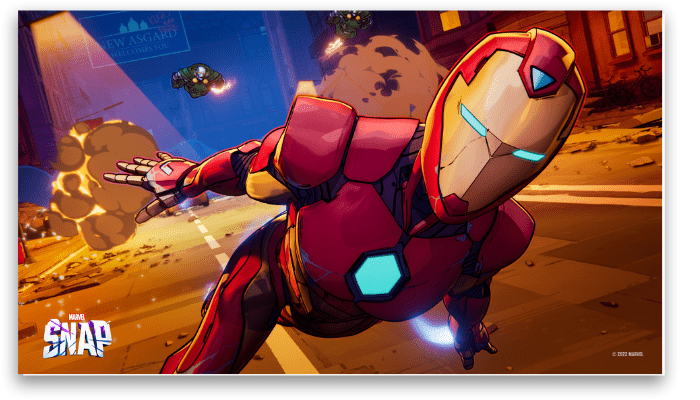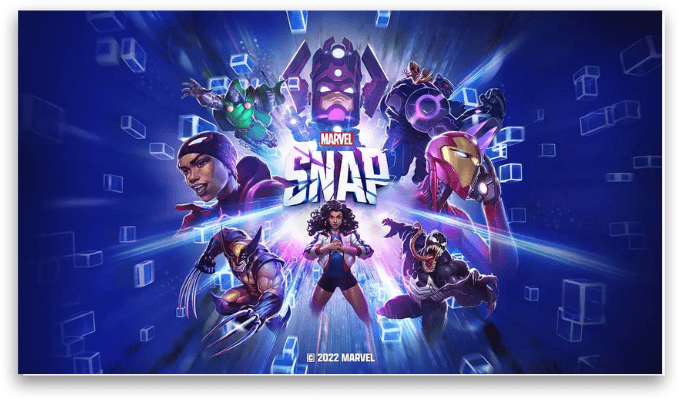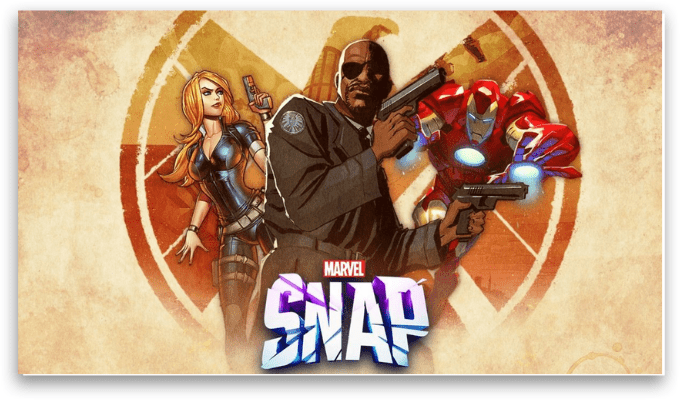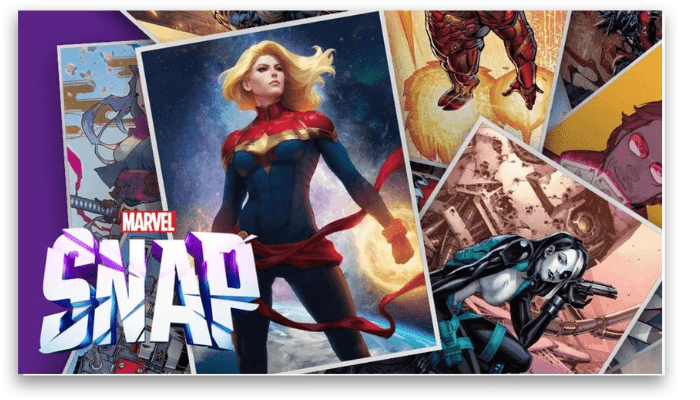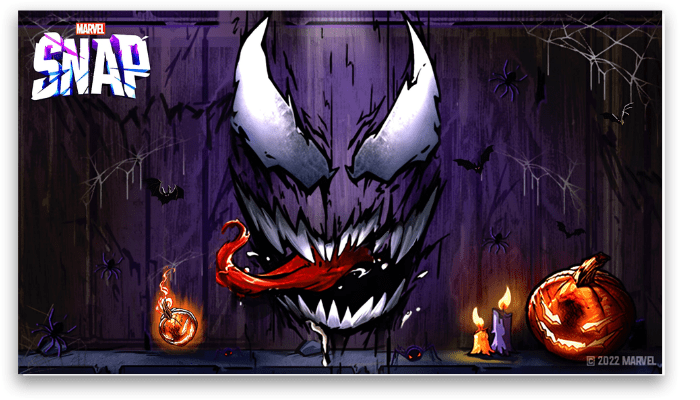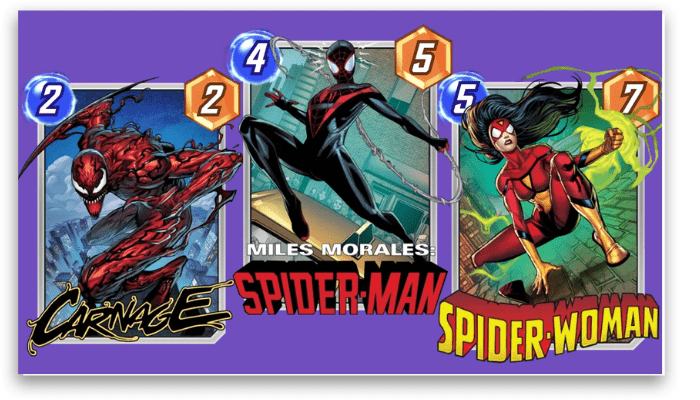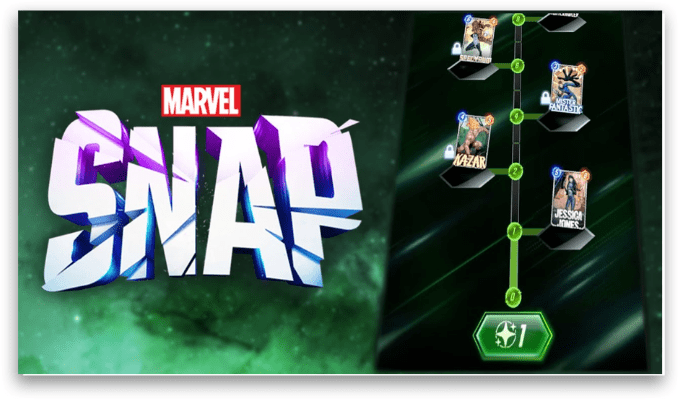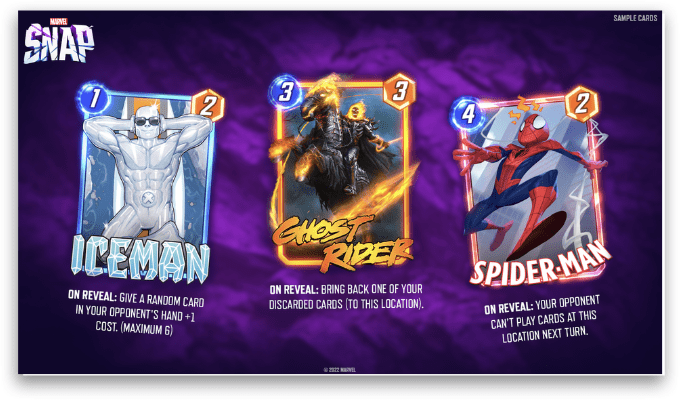The advent of digital collectible card games has led to an explosion of different approaches to the genre. Mostly, though, new games have adapted the fundamentals of physical CCGs. I’ve been extremely cautious with this type of game lately, but my immediate reaction to the Marvel Snap was overwhelmingly positive, but I wanted to give it more time to make sure I understood its true nature. I believe you have understood the essence of the game now, so it’s time to do some analysis.
Marvel Snap: Behind the Scenes
With Marvel Snap, veteran Hearthstone studio Second Dinner has reduced the collectible card game to its most essential pieces and reimagined them, creating a combination of systems that are elegantly simple without ever seeming simplistic. Four years ago, he and some of his colleagues left Blizzard and went off to do their own thing, and one of those things turned out to be Marvel Snap. The experience is there. But things aren’t that simple, are they? In fact, sometimes having great success in your past is a hindrance to your next attempt. Trying to make another game in the same genre that doesn’t just repeat old elements and is still awesome? That can be a very difficult task. There are some similarities between Hearthstone and Marvel Snap, mainly because both are so easy to pick up and play, but Snap is doing it by building its own identity and the fact that it works so well is a credit to the efforts of the entire development team. These people clearly know how to make a good card game, so of course, they made another good card game.
Marvel Snap in general
Like many other modern card games, Marvel Snap automates its mana or energy equivalent, adding one unit per turn. Then the game simplifies the genre even further: each match lasts just six turns, and there’s no direct combat between characters or the choice between damaging enemy minions or inflicting direct damage on the player. Shorter games also mean smaller decks – just 12 cards in total – which makes deck building more inviting and less intimidating. Instead, your goal is to accumulate more power in three locations. At the end of six turns, whoever controls two of the three locations wins the game, and ties are determined by the total power in all three.
Marvel Snap: Locations
These three locations are randomly selected from a huge pool, each featuring its own complexities and elements, and the areas range from the simple to the insane. The symbiote planet Klyntar will de-energize all cards played on it, while New York’s Central Park adds a 1-power squirrel to every other location. Locations are revealed from left to right for the first three rounds. The random nature means you might be in the middle of a match when a surprise third location completely shakes your strategy, and sometimes you’ll need to play blindly by playing a hero in an undisclosed location. The locations are, as you might expect, inspired by famous locations from the Marvel comics and cinematic universes.
Westview, taken from the Marvel Cinematic Universe, shifts to another random location in turn four, an homage to the WandaVision story. Bruce Banner’s Gamma Lab turns every card into a Hulk, which can make for a big power swing if you manage to hide a lot of low-value cards in there. These locations are some of the most inventive homages to the Marvel canon, especially if you’re familiar enough with comics to recognize something like The Space Throne.
Cards and Gameplay
Here’s the deal: You and your opponent each have a deck of twelve cards. No more, no less. A game normally lasts for six turns, but it can take a little longer in some very specific circumstances. You start the game with three cards in hand and each turn you draw a card from your deck. On the first turn, you have one energy point to use.
In the second, you have two, and so on. Each card costs a certain number of energy points to play and has a certain number of power points. The card may also have some additional abilities. We’ll come back to that shortly.
Hero Cards
The hero cards themselves are also built around Marvel mainstays, with similar concepts but occasionally less inventive than the local ones. The vast majority of the cards are a clever and creative look at how to express these heroes’ famous power sets within the Marvel Snap mechanics. Iron Man, for example, doubles the power level at one location by equipping all of his cards with an arc reactor. Captain America inspires his teammates, giving other cards a continuous boost wherever he is. Mercury, on the other hand, always starts in your starting hand, demonstrating its super speed by arriving before all your other cards. There are a handful of cards that feel like the game mechanics implementation came first and was clumsily adapted for a hero, but these are rare exceptions.
Half the fun of getting a new card is seeing how these famous heroes have been given proper power in the game. Even as a Hearthstone player for years, I often find it difficult to build a deck of 30 or more cards from scratch. In Marvel Snap, the deck size is so small that it’s easy to fiddle around with a deck, swapping a less-used card for your latest find, experimenting with a few quick games, and then trying something else. A similarly refined approach has been applied to its progression mechanics.
Playing Field
The playing field consists of three locations. One is revealed in the first turn, the second in the second turn, and the third in the third turn. Your goal is to control at least two of these locations by the end of the sixth turn, focusing full power on them. These locations will also have their own properties that get in the way of play. Sometimes they get in the way a lot. You can play cards anywhere from the first turn, but the properties of locations will not activate until they are revealed.
And within those mechanics, Marvel Snap isn’t afraid to break its own rules. One location makes the game last seven turns instead of six. Another location sets the objective for your area of control as having the least power, so you can win by simply not playing anything there if your opponent accidentally plays or generates a card there. And sometimes the game will surprise you with a completely unexpected turn. At one point, my game’s starting location was Ego, a living planet that takes control of the game and plays the two players’ decks for them. This essentially turned it into an automatic two-sided match, and it was a joke to watch.
Skills
Okay, back to skills. Some cards are simple and only need a certain amount of energy to enter the field.
Sometimes that’s exactly what you need. A Hulk in the right spot can often completely crush the match.
Extra Skills
But most cards have a few extra abilities that come into play under various conditions, the most common being the continuous effects that continue to work while the card is in play, and the On Reveal effects that activate when the card is flipped. There are some effects that come into action when the card is destroyed or discarded. Other effects are reactive to what your opponents do.
There is a lot of variety and the way they interact with each other and the properties of the locations open up a huge number of possibilities. These crazy situations seem designed to come up only rarely, so they’re a delightful surprise when they do. By making the game center around locations that are randomly assigned, no two games are exactly alike, and this encourages thinking strategically.
In a traditional CCG, you build your deck around a game plan or win condition, and most games revolve around fending off your opponent and executing your plan.
Strategy
Marvel Snap certainly maintains that level of initial planning strategy, but conditions in the field can change quickly. You may end up winning in a completely different way than you had planned, simply by adapting and anticipating your opponent’s moves.
And sometimes, for better or worse, conditions in the field will make your plan functionally impossible to complete. Since the beginning of the game, I’ve been trying to build a deck with just X-Men, ignoring possible strategies, and I’m getting very positive results. This has proven difficult and rewarding, but it does mean that the game is very permissive to many different types of players.
How to get new cards
You get new cards in a few different ways. The main means is to increase your collection level. Playing matches gives you card packs in your collection, and when combined with some credits, you can upgrade the rarity of your cards. This doesn’t change their game properties, just what they look like. But upgrading them will increase your collection level, and every time you increase a few levels, you will get some sort of reward in return. Up to level 500 or higher, you will receive a new card every four or six levels. You can also obtain variants of cards you already own by spending gold in the in-game store, and they can be upgraded independently to further increase your collection level. Cards can also be earned as part of Season Passes, but it looks like you’ll only get them if you have a Premium Pass.
Missions
Well, we’re about to talk about the white elephant in the room. Just a little longer before we get into this, friends. There are also quests to complete, and they are updated with a few new ones every two hours. While the events are happening, there are also season quests. Completing standard quests rewards you with credits and season experience. Completing Season Quests usually only gives you Season Experience. This experience will help you unlock new rewards in the Season Pass, earning credits, gold, and packs, as well as some Premium rewards for those who paid for them. Finally, there’s the Season Level issue. You’ll want it to be as high as possible by the end of the season, as the higher it is, the more rewards you get. You level up by winning matches, and this is in fact the main incentive for winning matches besides satisfying your own ego. You will receive reinforcements whether you win or lose. You will have to earn a set amount of points to increase your rank level and you will need to reach a certain rank level to earn specific rewards.
SNAP!
How many points do you get for a win? That’s where one of the most ingenious mechanics comes in: Snap. Even when a bad draw in an awkward location costs the game, losing never feels too punishing. This is partly because the games themselves are so fast and, pardon the pun, end up in a snap. With a match lasting only a few minutes at most, it’s easy to not care much about a loss and queue up for the next match, without having invested a lot of time. But it’s also because of another element, which gives the game its namesake. While the game seems to make it easy for you with matches against bots presented as real opponents, it doesn’t take long for you to face real opponents and compete for rank.
It’s funny how one or two throwaway comics in the Infinity Gauntlet’s history have become a cultural landmark thanks to the massive success of the Marvel movies. I can talk about Thanos snapping and normal people know what I’m talking about! Strange world. Unlike in the movie, Snapping in Marvel Snap doesn’t make half of all living things disappear into dust. It doesn’t even make Spider-Man tell Iron Man that he doesn’t feel so good. No, this game is basically like bluffing in poker. Snap doubles the bets each time it’s made, putting more points on the line to be lost or won.
Classification System
So if you think you’re going to lose, you can always back off and just lose the current bet amount. It will double again at the end, so you will always lose less by escaping than by taking a controlled loss. In this case, the classification is represented by Cosmic Cubes. It takes 10 cubes to level up, and each victory grants you two cubes by default. This means that in addition to the deck-building variables, random locations, and the various ways in which cards interact, you also have the very human elements of bluffing and trust in the game. At lower levels, you probably won’t mind the points lost, but as you climb the ranks, the post-snap tension becomes surreal. The mechanics add genuine stakes without costing real money, and that’s a hard thing to do in a game like this. With all factors at play, last-minute twists and turns can and do happen, so you’re never completely safe, no matter how far ahead you think you are. Taking a snap takes courage, and you will often pay for your bravado. If a player snaps and play continues, you are playing for four cubes. If both players snap, you’re playing for eight. This introduces an element of bluffing, as you may want to hide your big gameplay for the end, to calm your opponent down with enough confidence to come back and win more cubes. But it also means you can pull back any time you don’t feel confident about winning. This isn’t just a standard concession – it actually saves you a few cubes for retreating rather than continuing with a match you’ll end up losing. Coming out of a doomed game having lost just one cube when your opponent wanted to raise the stakes to four actually feels like a relief rather than a loss.
Is Marvel Snap pay-to-win?
Okay, time to talk about the white elephant. After all, nothing in this world is free. How does Marvel Snap monetize and where does the scam come in? The monetization strategy seems primarily geared towards purchasing variant art, such as pixelated or baby versions of the characters. There are so many of them that it seems impossible to gauge how long it might take to collect them all, but it’s also a purely visual feature.
Season pass
The other monetization comes in the form of a season pass, which grants new cards, credits, and other bonuses for completing quests. In my experience so far, the pass is also surprisingly generous and low-impact. I was worried that when I got to the middle of the season, I wouldn’t be able to finish the season on time and miss out on the best rewards. After just a few days, I was up to date and able to start pocketing the new quests as they progressively unlocked. Daily Quests unlock on a regular timer every eight hours and take just a few minutes to complete and grant you great progress on your Season Pass Quests. Perhaps unsurprisingly, given the past work of this development team, this is a very comfortable game to play for free for a long time. You won’t be able to collect all the cards, and you’ll eventually run out of credits to upgrade card rarities, but the flow of new cards and resources is constant enough to keep the game fun. You will eventually reach a point where new cards stop coming and things get less pleasant. It’s a very, very far-off point in the game, but I suspect most of the toughest players will hit it within a few months. Does this affect your viability in matches? So far, it doesn’t look like it. You can make excellent decks with the cards you get for free, and I suppose there’s nothing stopping developers from adding some of the Premium cards to the free pool after a while. Can new cards mess with this fragile balance of power? Absolutely. This article is just a cut in time. But for now, I think a player who plays for free can compete perfectly well with those who are paying.
Is it possible to be Free-to-Play?
The explosion of digital CCGs in general used the collection approach popularized by Magic, Pokémon, and similar physical card games years earlier. You spend money on a random pack of cards and then use those same packs to build your deck. Marvel Snap breaks that paradigm in favor of a different form of CCG progression that is only possible in a digital context. And that brings us to how you can pay if you want to. First, you can buy gold in various amounts. Gold may not seem immediately important when you first start the game, but the variant cards it can buy help to increase your collection level, and as you start to discover the easy ways to do this, it becomes vital. There are ways to get free gold, but they are definitely slow. The other way to spend money is through the Premium Season Pass. So far, it looks like they will cost you around fifty dollars and will give you some exclusive cards, lots of packs, and other extras.
Exclusive packages
There’s also a welcome pack that gives you some extra features and a nice Captain America card for a few bucks. Instead of opening random packs of cards, you build your collection by visually updating existing ones. I won’t say I won’t be seduced by the exclusive cards depending on what they are, but taking a good, sober look at Marvel Snap as it is, I think the monetization isn’t too bad. It helps that it’s a card game and therefore doesn’t really have a story or ending to put off until you grind or pay. Nothing is too expensive, and I think you can still be competitive even if you don’t pay. As things go in free-to-play games, you can’t ask for much more than that. Will I drop out of the game when I get tired of the plateau? I suppose we’ll cross this Bifrost when we get to it. You earn upgrade materials through the game and then use them to upgrade cards with varying levels of visual effects: coming off the board, a nifty 3D effect, an animated background, and so on. Upgrading these cards gives you a “Collection Rank”, which takes you along a path that gives you more upgrade materials and, most importantly, new cards.
Then you can start updating these new cards and the process starts all over again. It’s a devilishly attractive system that feeds on itself that could easily have turned predatory. So far, this is not the case. While anything is possible with a live game that will continue to add content for the foreseeable future, now you can’t just spend money buying all the best cards. Even if you had infinite money to spend, you can only buy a handful of upgrade shortcuts a day, making it a pretty inefficient way to level up.
Conclusion
Marvel Snap is an incredibly well-designed game. It’s perfectly suited for mobile devices thanks to how quickly matches are resolved, but the strategy level is satisfyingly deep. Quests encourage you to try new things, and the constant stream of new cards ensures you have plenty of options to choose from. Monetization is relatively low-impact and the plateau point for free-to-play players is far enough away that it’s hard to call it unfair. I also love how well the cards represent the various heroes and villains in such simple terms, with the locations doing the same. The Snap mechanic is the icing on the cake. It’s a fantastic title that I can’t put down. This is a game that wants you to check in frequently for a while, not that you obsess over it for hours on end. Although, to be honest, it’s already too late for that – I’ve already wasted hours on Marvel Snap and I’m obsessed. The game is well-tuned, well-designed, and so easily digestible that it’s hard to put down. I keep playing even after completing my daily missions or season pass, just because I want to play another game or test a new card. Second Dinner has built an incredible foundation here, and I hope Marvel Snap continues to entertain me for years to come. Marvel Snap! is available for download on iOS and Android platforms.
Did you like the article?
So continue with us!
Everything about Biotech, the new RimWorld DLC! Everything about the 1.0 version of Vampire Survivors Classic Microsoft Windows games that are still played!
